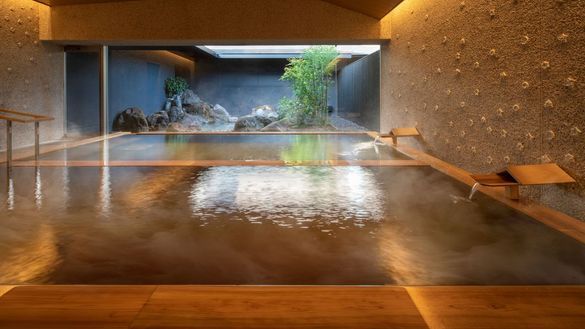 Three unforgettable destinations in Kyushu, Japan
Three unforgettable destinations in Kyushu, Japan
Kyushu, Japan’s third-largest island is fast becoming a go-to destination, especially for those travellers that have previously visited Japan and are eager to explore beyond the much-frequented Tokyo-to-Kyoto route.
Famous for its active volcanoes and natural beauty, and as the birthplace of tonkotsu ramen, Kyushu offers an attractive combination of relaxation and indulgence through its abundance of hot springs, regional culinary specialties and unique travel experiences.
Eat, see and soak in Beppu’s world-renowned hot springs
With over 2,000 hot springs, Beppu is the largest onsen town in western Japan, and not only can you see and soak in its hot, healing waters but cook and eat from them as well! For a unique and unforgettable dining experience, Jigokumushi meaning “hell steamed” is the method of steaming your favourite ingredients over hot spring water, and it has fast become a culinary specialty of Beppu.
Long ago in the Kannawa region, its bubbling, steaming waters and gas explosions were referred to as “jigoku” meaning “hell”. Jigoku Meguri is a popular tour of the eight hells of Beppu and it’s clear by their appearance that they are for viewing only.
After a long day of sightseeing, there’s nothing better than recuperating at one of Beppu’s many hot spring ryokans. Offering a contemporary spin on the traditional Beppu hot spring experience, KAI Beppu was designed by world renowned architect Kengo Kuma and features picture-perfect ocean views and Oita-influenced kaiseki dining.
Enjoy retail therapy and rural scenery in Yufuin
Located just ten kilometres inland from Beppu is the onsen town of Yufuin, where ryokans and hotels are spread out and its main street is instead lined with cafes, boutiques and small museums. Another speciality of Yufuin is the horse-drawn carriage rides which depart from JR Yufuin Station to take passengers for a relaxing tour through the countryside.
Situated between Mount Yufu and a landscape of beautifully terraced rice fields is KAI Yufuin, another restful hot spring ryokan designed by Kengo Kuma where guests can enjoy views of open skies as they relax in the outdoor baths fed by the bountiful, soft waters of the Yufuin Hot Springs.
Selected for Travel + Leisure ® It List 2023, the annual award for the best new hotels in the world, KAI Yufuin feels just like a traditional farmhouse, thanks to its spacious wraparound veranda where guests can relax while viewing the rice fields. They can also savour dinners featuring game meat and deeply flavourful vegetables grown throughout the geothermal region.
Visit unusual attractions surrounding Nagasaki
For centuries, Nagasaki played a key role in Japan’s foreign trade relations due to its proximity to Asia’s mainland. During the second World War, Nagasaki sadly became the second city after Hiroshima to be destroyed by an atomic bomb. Whilst a visit to the Peace Park and Nagasaki Atomic Bomb Museum may leave you feeling sombre, there are more attractions that make Nagasaki one of Japan’s most interesting cities for travellers.
For an eerie sightseeing experience, Hashima Island, also known as Gunkanjima or Battleship Island, is an abandoned offshore mining facility that is accessible through boat tours. The James Bond film “Skyfall” was partly filmed on the island where visitors can see its crumbling concrete workers’ quarters and overgrown industrial sites.
In addition to the historical Shimbara-jo Castle, Huis Ten Bosch is a Netherlands-inspired theme park with canals and life-sized recreations of 17th-century Dutch buildings. Opened in 1992, this unique theme park commemorates Japan and the Netherland’s long-standing relationship.
East of Nagasaki is Unzen, a small city near Mount Unzen facing Ariake Bay. KAI Unzen is a hot spring ryokan offering a deeper dive into the local culture with decor fusing Japanese, Chinese, and Dutch aesthetics as homage to Nagasaki’s history as a melting pot of the three cultures. Not only can you relax in its stunning communal bath decorated with stained glass but try your hand at letterpress printing, a technique first practiced in Japan in Nagasaki.



















